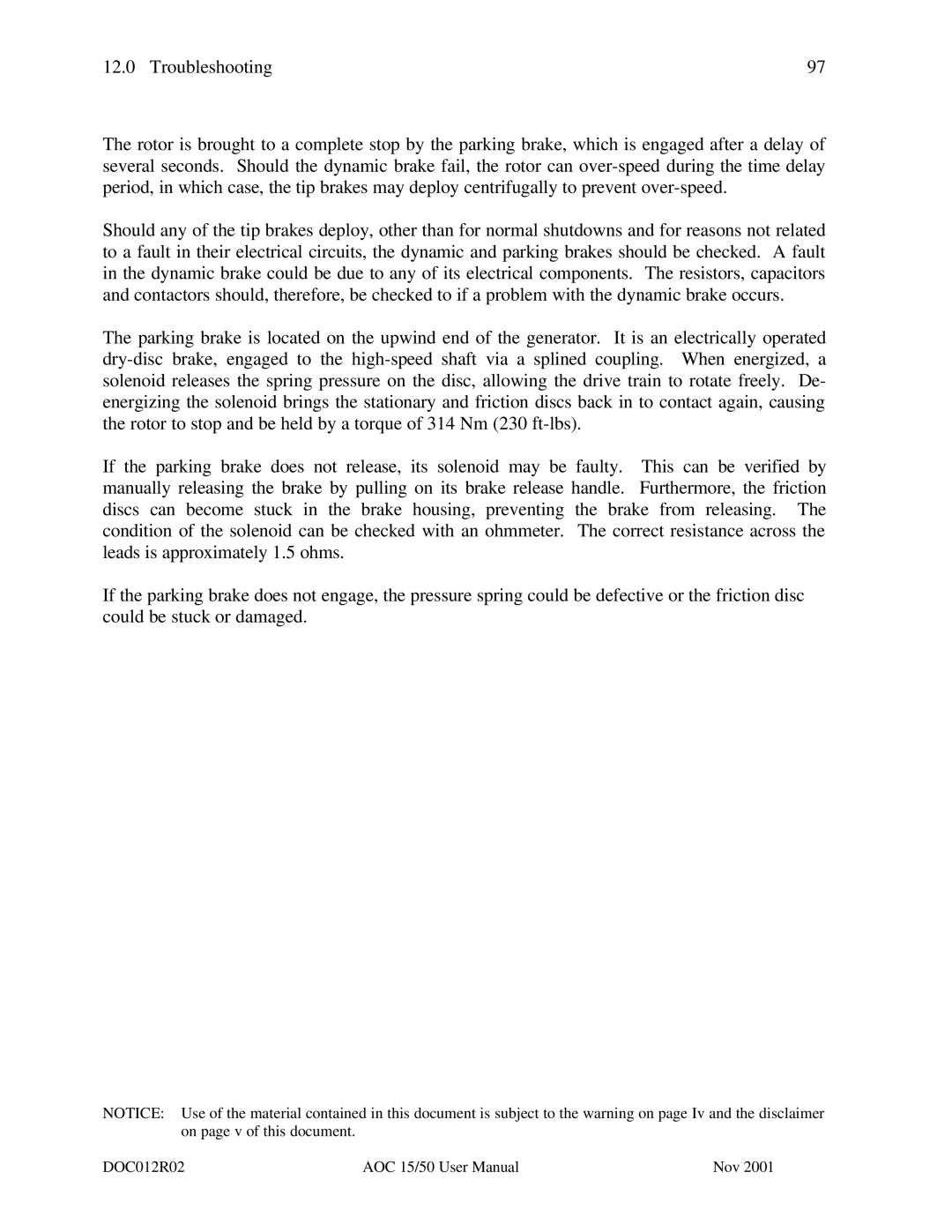12.0 Troubleshooting | 97 |
The rotor is brought to a complete stop by the parking brake, which is engaged after a delay of several seconds. Should the dynamic brake fail, the rotor can
Should any of the tip brakes deploy, other than for normal shutdowns and for reasons not related to a fault in their electrical circuits, the dynamic and parking brakes should be checked. A fault in the dynamic brake could be due to any of its electrical components. The resistors, capacitors and contactors should, therefore, be checked to if a problem with the dynamic brake occurs.
The parking brake is located on the upwind end of the generator. It is an electrically operated
If the parking brake does not release, its solenoid may be faulty. This can be verified by manually releasing the brake by pulling on its brake release handle. Furthermore, the friction discs can become stuck in the brake housing, preventing the brake from releasing. The condition of the solenoid can be checked with an ohmmeter. The correct resistance across the leads is approximately 1.5 ohms.
If the parking brake does not engage, the pressure spring could be defective or the friction disc could be stuck or damaged.
NOTICE: Use of the material contained in this document is subject to the warning on page Iv and the disclaimer on page v of this document.
DOC012R02 | AOC 15/50 User Manual | Nov 2001 |
